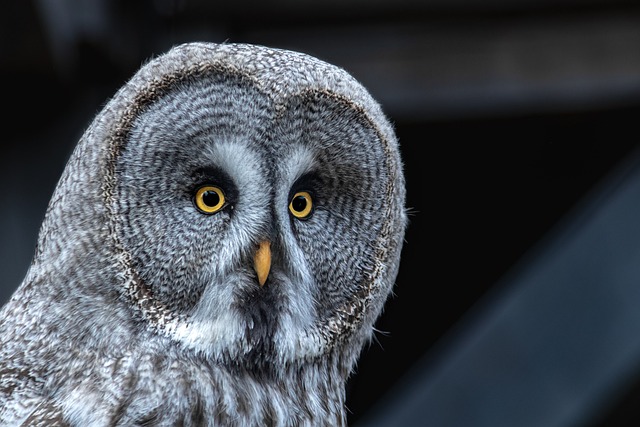Decoding the Nocturnal Symphony: The Fascinating World of Owl Vocalizations
The haunting hoots and eerie screeches that pierce the night air have long captivated human imagination. Owls, with their mysterious nocturnal habits and silent flight, are masters of communication in the dark. This article delves into the intricate world of owl vocalizations, exploring how these nocturnal raptors use sound to navigate their environment, attract mates, and defend their territories.

The most recognizable owl sound is the classic hoot, typically associated with territory defense and mate attraction. However, this is just the tip of the iceberg when it comes to owl vocalizations. Different species have evolved unique calls that reflect their habitat, lifestyle, and social structure.
Anatomy of an Owl’s Voice
The owl’s ability to produce such a wide range of sounds is due to its unique vocal anatomy. Unlike most birds, owls lack a syrinx, the avian equivalent of a voice box. Instead, they use a structure called the tracheal diverticulum, which allows them to produce deep, resonant calls that can travel long distances through dense forests or across open plains.
This specialized anatomy, combined with the owl’s large head and facial disc, acts as a natural amplifier, projecting their calls with remarkable efficiency. Some species, like the Great Horned Owl, can produce vocalizations that can be heard up to a mile away in favorable conditions.
The Social Context of Owl Calls
Owl vocalizations play a crucial role in their social interactions. During breeding season, male owls use their calls to attract mates and establish territories. The frequency and intensity of these calls often increase as the breeding season approaches, creating a nocturnal chorus that serves as a complex interplay of courtship and competition.
Pair bonding in owls is often reinforced through duetting, where mated pairs engage in coordinated calling. This behavior not only strengthens the bond between mates but also serves to defend their shared territory from intruders.
Species-Specific Vocalizations
Each owl species has its own unique vocal signature, adapted to its specific ecological niche. The Barn Owl, for example, is known for its eerie, raspy scream, which has earned it the nickname screech owl in some regions. This call is particularly effective in open habitats where the sound can travel unobstructed.
In contrast, the Eastern Screech Owl, despite its name, produces a soft, trembling whistle that is more suited to its woodland habitat. This gentle call allows the owl to communicate without alerting potential prey or attracting the attention of larger predators.
The Role of Silent Flight
While vocalizations are a crucial part of owl communication, it’s important to note that these birds are also masters of silent flight. Their specialized feathers allow them to move through the air with minimal sound, a trait that is essential for their hunting success. This ability to fly silently complements their vocal abilities, allowing owls to approach potential mates or rivals without detection before making their presence known through calls.
Conservation Implications
Understanding owl vocalizations has significant implications for conservation efforts. Researchers and conservationists often use acoustic monitoring to study owl populations, track their movements, and assess the health of ecosystems. By recording and analyzing owl calls, scientists can gather valuable data on population sizes, breeding success, and habitat use without disturbing the birds.
However, human-generated noise pollution poses a growing threat to owl communication. Urban expansion and increased traffic can mask or distort owl calls, potentially impacting their ability to find mates, defend territories, and hunt effectively. Conservation strategies must consider the acoustic environment to ensure the long-term survival of these nocturnal predators.
The Future of Owl Vocalization Research
As technology advances, so does our ability to study and understand owl vocalizations. Bioacoustic research, combining biology and acoustics, is shedding new light on the complexities of owl communication. Machine learning algorithms are being developed to automatically identify and classify owl calls, allowing for more efficient and widespread monitoring of owl populations.
These technological advancements are opening up new avenues for research, potentially revealing previously unknown aspects of owl behavior and ecology. Future studies may uncover subtle variations in calls that convey information about an individual’s age, health, or genetic quality, further expanding our understanding of these enigmatic birds.
Conclusion
The world of owl vocalizations is a rich tapestry of sound, woven into the fabric of the night. From the deep hoots of the Great Horned Owl to the whispered trills of the Screech Owl, these nocturnal calls are not just random noises but a complex language that has evolved over millions of years. As we continue to unravel the mysteries of owl communication, we gain not only a deeper appreciation for these remarkable birds but also valuable insights into the intricate relationships that shape our natural world.





